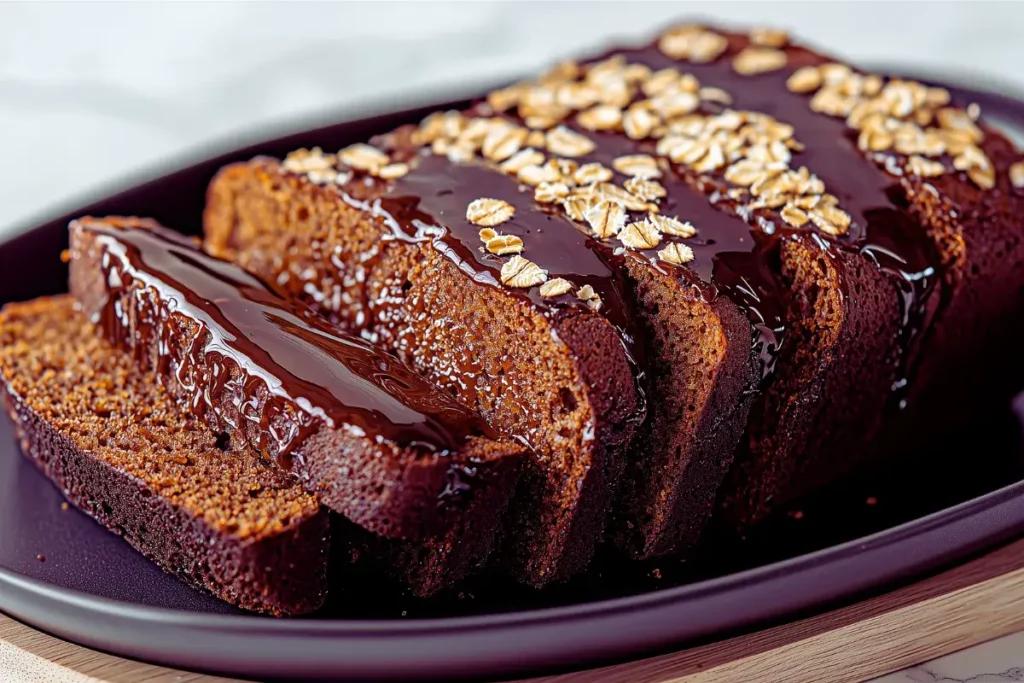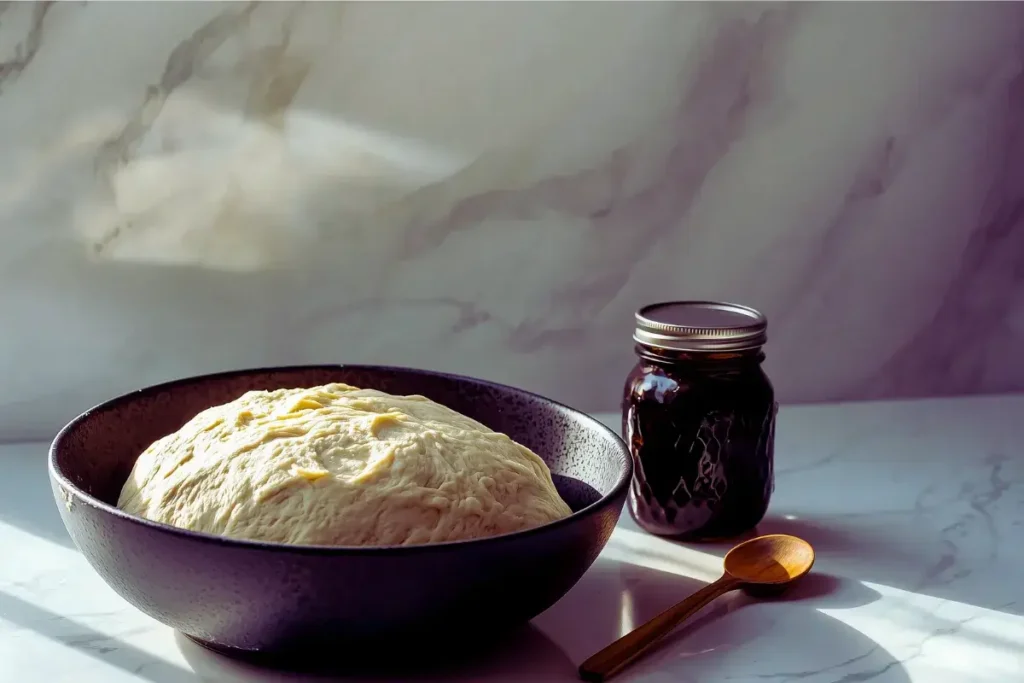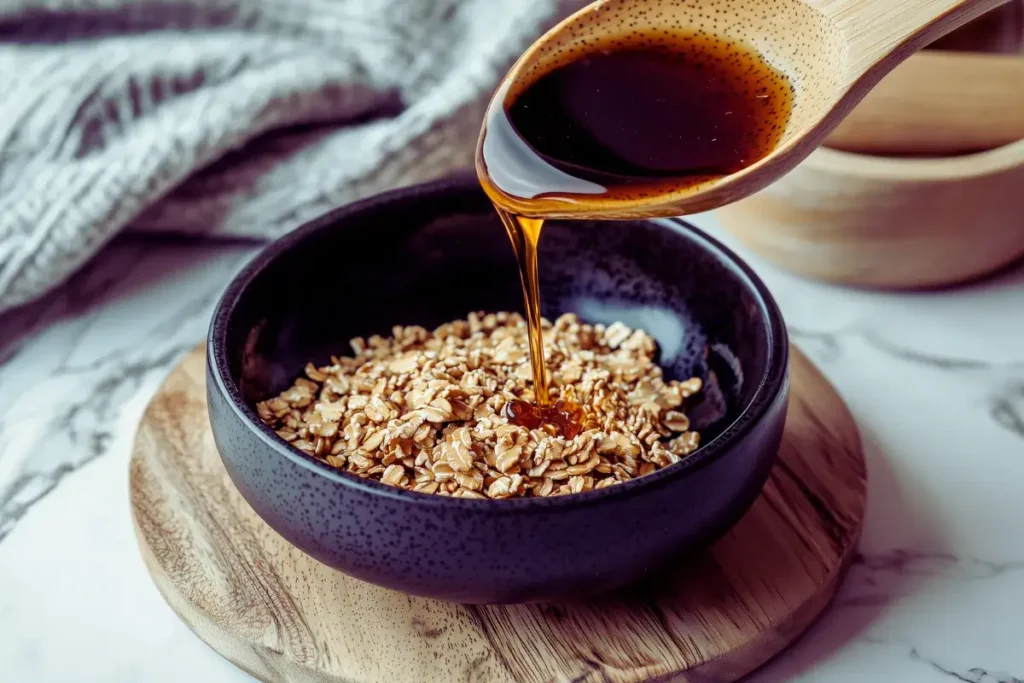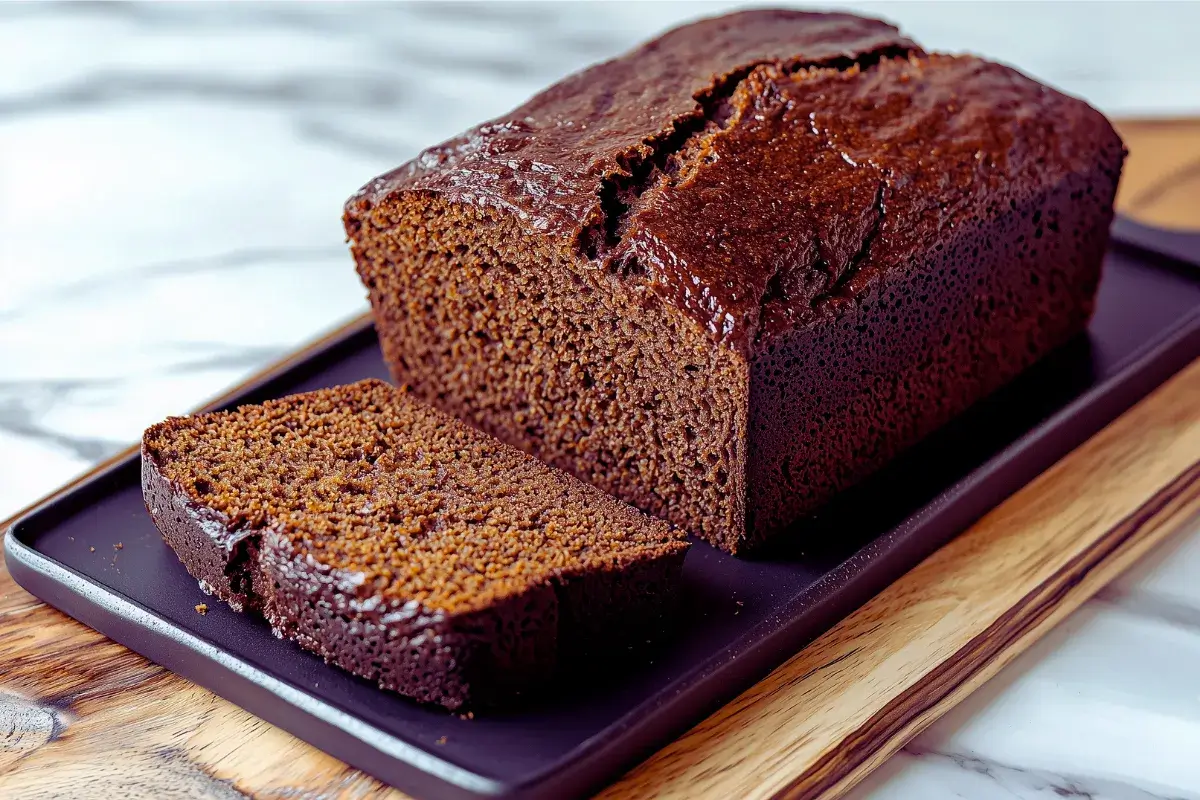What Does Molasses Do in Bread?
Bread baking is a beautiful blend of science and soul, and sometimes, the most magical ingredients are the ones hiding in plain sight. What does molasses do in bread? This sticky, dark syrup might not always take center stage, but it’s a total game-changer when it comes to flavor, texture, and even nutrition.
In this guide, we’ll explore how molasses transforms your homemade loaves—from enhancing taste and softness to helping bread rise and last longer. Whether you’re a beginner baker or a seasoned breadhead, you’ll uncover why this humble sweetener deserves a top spot in your pantry. Plus, we’ll dive into classic molasses-rich breads, baking tips, and answer all the juicy questions from the “People Also Ask” section.
Ready to unlock the secrets behind rich, moist, irresistible bread? Let’s knead in some knowledge.
Understanding Molasses in Baking
What is Molasses?
Before we get into what molasses does in bread, let’s start with what it actually is. Molasses is a thick, dark syrup made during the sugar-making process—specifically, when sugarcane or sugar beets are boiled down to extract crystals. What’s left behind is molasses, a sweetener that packs way more flavor complexity than white sugar ever could.
It’s like sugar’s bold, moody cousin—deep, mysterious, and loaded with personality. And it comes in a few different varieties:
- Light molasses: Mild, slightly sweet, and ideal for delicate bakes.
- Dark molasses: Richer and more robust, perfect for hearty breads.
- Blackstrap molasses: The darkest, least sweet, but highest in nutrients like iron, magnesium, and potassium.
This isn’t your everyday sugar substitute—it’s a baking powerhouse.
Types of Molasses and Their Uses in Bread
Different types of molasses bring different strengths to the mixing bowl. If you’re crafting something like molasses oat bread or classic Boston brown bread, dark or blackstrap molasses is where it’s at. These versions add that bold, slightly bitter depth and rich color that make rustic loaves truly unforgettable.
Lighter molasses, on the other hand, is your go-to when you want a subtle sweetness without overpowering your bread’s other flavors—perfect for soft dinner rolls or sandwich bread.
What makes molasses really unique in bread isn’t just the taste. It’s also the moisture, color, shelf life, and rise it brings to the dough. And as you’ll soon see, what molasses does in bread goes far beyond sweetness.
Flavor Enhancer — What Does Molasses Do in Bread?
What Flavor Does Molasses Add to Bread?
Molasses doesn’t just sweeten your bread, it transforms it. What does molasses do in bread? It adds a rich, earthy sweetness with deep caramel undertones, and even a hint of smokiness depending on the type. Unlike plain sugar, which hits fast and fades, molasses lingers—bringing warmth and a complexity that plays beautifully with whole grains and warm spices.
It’s why breads like rye, Boston brown bread, and molasses oat loaves taste so comforting. This magic syrup enhances flavor profiles, turning even simple ingredients into a full-bodied bite. Pair molasses with cinnamon, nutmeg, or cloves, and your kitchen will smell like a bakery from another century.

Pro tip: if you’re curious to see molasses flavor at work, try this oat molasses bread recipe from Maine. It’s a hearty, cozy loaf that perfectly showcases everything molasses has to offer.
Recipes Where Flavor Shines
Some bread types simply beg for molasses. Let’s break down a few:
- Boston Brown Bread: A steamed classic with cornmeal, rye, and that unmistakable dark color and sweet tang. It wouldn’t be the same without molasses.
- Molasses Oat Bread: Oats and molasses are a dream team—hearty, slightly sweet, and loaded with texture.
- Banana Bread with Molasses: Swap some sugar for molasses in your banana bread and you’ll get an unbelievably rich and moist loaf.
- Molasses Dinner Rolls: Soft and subtly sweet, these make any dinner table shine.
Using molasses isn’t just about taste—it’s about creating a feeling. A rustic, old-fashioned, cozy kind of flavor that lingers long after the last bite. That’s why molasses is more than a sweetener—it’s a baker’s flavor weapon.
Texture and Moisture — What Does Molasses Do in Bread?
How Molasses Keeps Bread Moist
If you’ve ever pulled a fresh loaf out of the oven only for it to go dry by the next day—molasses is here to save the day. One of the unsung powers of molasses in bread is its humectant property. That’s just a fancy way of saying it locks in moisture. And that’s just one piece of what does molasses do in bread?—it keeps it soft, fresh, and satisfying for longer.
So, what does molasses do in bread in terms of texture? It keeps it soft, tender, and fresh for longer. Especially in loaves with whole grains or dense flours, molasses helps prevent that dreaded dryness. Plus, it creates a smoother crumb and a gorgeous, shiny crust.
This moisture retention means molasses is ideal for breads you want to enjoy over a few days—or to wow guests at a gathering with soft, bakery-style rolls.
Why Softness Matters: Shelf Life and Texture Benefits
Let’s face it—nobody wants crumbly, dry bread. When you’re baking for flavor and function, softness is a big deal. Molasses not only makes the loaf moist but also adds just enough density to feel hearty without being heavy.
Even better? That softness actually extends the shelf life. Thanks to the sticky nature of molasses, your bread won’t stale as fast. And for breads like Anadama or pumpernickel, that’s a huge plus.
Plus, this added softness also makes it easier to slice, toast, and use in sandwiches. Whether you’re making a rustic loaf or a sweet breakfast bread, molasses has your back when it comes to that perfect, soft bite.
So if you’ve ever wondered what does molasses do in bread, the answer isn’t just “sweeten it”—it keeps every slice tender and tasty from start to finish.
Supporting the Rise — What Does Molasses Do in Bread?
How Molasses Helps Bread Rise
Here’s something most home bakers overlook: molasses helps your bread rise better. It’s not just a sweetener—it’s fuel for your yeast. When you add molasses to your dough, the natural sugars in it give yeast a much-needed boost. That means a stronger rise, better structure, and a lighter crumb.
So, what does molasses do in bread when it comes to rising? It speeds up the fermentation process just enough to help the yeast do its thing—without making your dough unpredictable. This is especially handy in denser breads like rye or whole wheat, where getting a good rise can be tricky.
For the best results, stick to light or dark molasses. Blackstrap has less sugar and might slow down yeast activity unless balanced with another sweetener. Either way, molasses and yeast? They’re a power duo.

Molasses and Fluffiness
Let’s talk about fluff. Everyone loves soft, pillowy bread, and molasses plays a quiet but powerful role here. By giving yeast a steady sugar source, molasses helps produce more gas bubbles during fermentation. That’s the secret to that light, airy texture we crave in every slice. So next time someone asks what does molasses do in bread?, remember—it helps your bread rise and breathe better.
Combined with proper kneading and good gluten structure, molasses enhances the dough’s elasticity—meaning better oven spring and less dense loaves.
If you’re baking with whole grains or alternative flours, molasses can be especially helpful in boosting fluffiness. It makes your hearty loaf feel lighter, without sacrificing that wholesome texture.
Nutritional Benefits of Molasses in Bread
Is Molasses Healthy?
We get it—molasses tastes amazing. But did you know it’s actually good for you too? Especially blackstrap molasses, which is often called a “super sweetener” for a reason. It’s rich in iron, magnesium, potassium, and calcium. So what does molasses do in bread? from a nutrition angle? It helps you bake smarter—flavorful and functional at the same time. That means when you’re adding it to your dough, you’re sneaking a little nutrition into every bite.
So again, what does molasses do in bread from a health standpoint? It boosts the mineral content without needing supplements or fortified ingredients. One tablespoon of blackstrap molasses alone can offer up to 20% of your daily iron needs!
That makes it a fantastic option for people with anemia, vegans, or anyone looking to bake with a functional ingredient that goes beyond just flavor.
Nutrient-Rich Baking: When Taste Meets Wellness
When you bake with molasses, you’re creating loaves that nourish as much as they satisfy. It’s especially great in recipes that focus on whole foods—think oat breads, multigrain loaves, or rustic sweet rolls. These types of recipes get a double benefit: wholesome grains + mineral-packed sweetness.
While refined sugar offers empty calories, molasses brings both energy and essential nutrients to the table. And that makes it an ideal choice for health-conscious bakers.

For more delicious, nutrient-rich recipes, check out our guide on how many calories are in oatmeal molasses bread—it’s wholesome, flavorful, and packed with everything you just read about.
Bread Types That Use Molasses Best
Classic Recipes That Shine with Molasses
If you’re wondering what does molasses do in bread?, one of the best ways to find out is to look at the breads that rely on it the most. From old-fashioned classics to modern twists, certain recipes absolutely shine when molasses takes the spotlight.
- Boston Brown Bread: This New England favorite is a steamed bread made with rye, whole wheat, and cornmeal. Molasses adds the deep color and sweet tang that makes it so iconic. Without it, the bread simply wouldn’t be the same.
- Molasses Oat Bread: Oats give this bread heartiness, while molasses brings the moisture and that warm, slightly smoky sweetness. It’s perfect for breakfast or a rustic sandwich. If you want a solid example, try the oat molasses bread recipe from GoodiesRecipe.
- Molasses Raisin Bread: The sweetness of the raisins balances perfectly with the darker notes of molasses. This loaf is a nostalgic treat that’s ideal for toast.
- Anadama Bread: A traditional New England loaf made with cornmeal and molasses. It’s chewy, slightly sweet, and steeped in history.
These breads don’t just use molasses—they rely on it for flavor, structure, and aroma. If you’ve ever bitten into one of these and thought, “Wow, this tastes like home,” now you know why.
Innovative Molasses Bread Ideas
But don’t stop at tradition. Molasses is versatile enough for modern recipes too. Try adding it to:
- Irish soda bread for a richer twist
- Banana bread to boost both moisture and taste
- Dinner rolls to create soft, subtly sweet bites perfect for holiday meals
Each recipe shows, in its own way, what molasses does in bread: it transforms the ordinary into something unforgettable.
Baking with Molasses: Tips and Common Mistakes
How Much Molasses Should You Use?
You’ve probably asked yourself, “What does molasses do in bread if I add too much?” Well, while molasses is amazing, balance is key. Using 1–2 tablespoons per loaf is usually the sweet spot—pun intended.
Too little, and you might not get the full flavor or benefits. Too much, and your dough could turn overly sticky or your bread may come out dense. When you’re just starting out, begin with light molasses. It’s milder and easier to manage in terms of both taste and texture.
Tips for Success + Common Mistakes to Avoid
To make your baking experience smoother (and tastier), here are some simple but effective tips:
- Grease your spoon before measuring molasses—it slides out like a dream
- Pair molasses with hearty flours, oats, or spices like cinnamon and ginger for depth
- Don’t overmix—too much stirring can make the dough tough
Avoid these common slip-ups:
- Using only blackstrap molasses: It’s very bitter and can overpower your loaf unless you’re aiming for a strong, bold taste
- Skipping yeast-proofing: Make sure your yeast is active before combining it with molasses for the best rise
- Ignoring flour balance: Because molasses adds moisture, slightly reduce other liquids in your recipe
With a few tweaks and mindful measurements, molasses can elevate any loaf. Remember, it’s not just about sweetness—it’s about richness, moisture, and that comforting depth of flavor. And that’s exactly what molasses does in bread.
FAQs – People Also Ask
What is the purpose of molasses in bread?
Great question—and one that’s at the heart of this article. What does molasses do in bread? It adds a deep, rich flavor, helps the bread stay moist, and even feeds the yeast to encourage a good rise. It also improves the texture and gives the crust that beautiful golden-brown hue.
Whether you’re baking a rustic oat loaf or soft dinner rolls, molasses contributes far more than just sweetness—it’s a functional and flavorful upgrade.
What is the benefit of molasses in baking?
Molasses isn’t just for bread. In general baking, it acts as a natural sweetener, adds minerals like iron and calcium, and creates a denser, more moist texture. It’s especially useful in recipes that call for a bit of depth—like gingerbread, spice cakes, and dense cookies.
Plus, it pairs beautifully with spices, so anytime you’re working with cinnamon, nutmeg, or cloves, molasses will elevate the flavor to the next level.
What ingredient makes bread more fluffy?
Fluffiness in bread mainly comes from active yeast, proper kneading, and a balanced recipe. However, molasses also plays a role. It gives yeast the sugar it needs to rise effectively, which creates air pockets in the dough.
So yes—molasses can help your bread become fluffier, especially when paired with the right flour and proofing technique.
What does molasses add to baking?
In baking, molasses adds more than just flavor. It brings:
- A rich, earthy sweetness
- Moisture retention
- Natural color
- A longer shelf life
And in bread, it answers the big question: What does molasses do in bread? It makes each bite taste fuller, last longer, and feel softer—basically, it makes your loaf better in every way.
Final Thoughts – Why Every Baker Should Try Molasses
So, let’s wrap things up. By now, you’ve seen all the ways molasses can transform a simple loaf into something truly special. Still thinking what does molasses do in bread? It elevates flavor, boosts moisture, and turns any loaf into something worth sharing. Still wondering what does molasses do in bread? Here’s the short answer: it enhances flavor, improves moisture, boosts nutrition, and supports yeast for a better rise.
From hearty brown breads to fluffy dinner rolls, molasses isn’t just a sweetener—it’s a smart, functional, and delicious ingredient every baker should have on hand.
And the best part? It’s easy to use. Just a spoon or two can completely change your loaf for the better. Whether you’re baking for health, comfort, or just the joy of it, molasses brings that old-world magic into every bite.
So next time you’re mixing up dough, give molasses a shot—and taste the difference for yourself. If you’re ready to put everything you’ve learned into action, start with a classic: this molasses oat bran bread recipe is an easy, delicious place to begin. You’ll never look at bread the same way again.


2 thoughts on “What Does Molasses Do in Bread? | Amazing Benefits & 6 Uses”